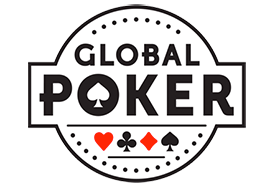Indian gaming has gone from bingo halls in the boonies to big business. Plus, revenues just keep on rising. A fact that only seems to exacerbate the many divisive issues between the Native American tribes that own casinos and the states they operate in.
It was 1987 when the Supreme Court of the United States decided states that allow some form of gaming have no authority to regulate or prohibit gaming on Indian land.
The decision amounted to an invitation for a huge number of Native American tribes to build casinos. In fact, hundreds eventually would.
Indian Gaming Regulatory Act
A year later, federal lawmakers tried to give states some measure of control over Indian gaming. They passed the Indian Gaming Regulatory Act (IGRA).
IGRA essentially required states to enter into good-faith negotiations with tribes establishing gaming operations. The outcome of these negotiations are the gaming compacts that make the Indian gaming operations lawful. However, they also often give tribes exclusive rights to gaming in the areas where they operate in return for a piece of revenues going to the state or host community.
At the time, general consensus among members of Congress was Indian gaming wasn’t worth much. In fact, some even said it amounted to little more than a couple of slot machines and bingo games hundreds of miles and millions of dollars away from the legal and regulated casino industry in Nevada and New Jersey. However, it got big fast.
By 1993, the New York Times reported as many as 175 tribes in 25 states had jumped in the gaming business. Plus, Indian gaming was suddenly a $6-billion-a-year industry growing by $1 billion annually.
A Native American casino construction boom continued for the next 25 years and now, the industry is even bigger than anticipated.
Play At Golden Nugget Now With Free Signup Bonus
-
 Visit Golden Nugget
Visit Golden Nugget- $20 FREE100% UP TO $1500
- Golden Nugget ReviewOverall Grade A
- Bonus A+
- Games A
- Support A
- Banking B+
Record Indian gaming revenues
The National Indian Gaming Commission says there are 494 gaming operations owned by 242 federally recognized tribes operating inside the US today.
Plus, it released financials for fiscal 2017 this week, showing gross gaming revenue hit $32.4 billion, a 3.9 percent jump over 2016.
Of course, gross gaming revenue is calculated before the cost of employee salaries and other operating expenses are deducted. Plus, whatever piece of revenues the state or host community gets as a part of the tribal-state compacts have yet to be deducted as well.
Tribal-state gaming compacts vary from state to state, tribe to tribe, and even casino to casino. However, most states are generally able to negotiate a deal that will give it somewhere between 15 and 25 percent of revenues.
Even at the low end, that’s billions of dollars. It’s the kind of money the states involved have become increasingly dependent on. Something that makes the tribes tremendously influential, particularly when it comes to gambling expansion issues.
Tribal-state issues abound
California gaming tribes have already used that influence. They’ve wielded it to at least slow down the passage of sports betting and online poker legislation. Concerns that widespread legal sports betting might infringe upon gaming exclusivity rights in New York has effectively done the same.
Plus, tribal-state gaming compact negotiations have become increasingly acrimonious over the years.
In Upstate New York, the Seneca Nation of Indians has even stopped making payments to the state. It owns and operates six casinos. However, the tribe claims its compact allows it to stop making contributions to the state after 14 years.
Of course, it could just be sour grapes. The state authorized the opening of four commercial casinos over the past 18 months. They all sit just outside the tribe’s area of exclusivity.
Even beyond New York and California, relations are tense between gaming tribes and the states they operate in these days. The fact that Indian gaming revenues are breaking records is good news for tribes. But it does very little to help that.
The post Record Indian Gaming Revenues Not Exactly Helping Tribal-State Relations appeared first on Play USA.










